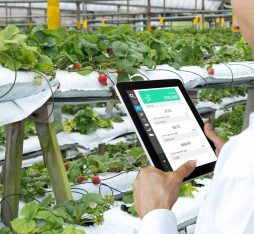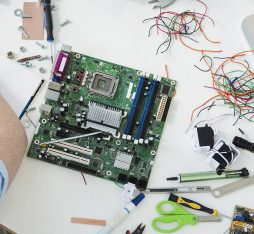The Paris2Connect project is being jointly developed by the City of Paris and the Paris2Connect consortium, which brings together five companies: ATC France, RATP, Signify, Nokia and Aximum. The project is a connected, shared and fully operational infrastructure, deployed over a 3.5 km route in the 12th and 13th arrondissements of Paris. This area is a particularly interesting testing location, as many people travel through it every day and it has a strong multimodal transport system thanks to its three railway stations (Lyon, Austerlitz and Bercy).
Accessible roadways are a legal requirement. Paris2Connect enables the rapid deployment of use cases at a lower cost.
New Uses for Existing Infrastructure
Laurent Benet, Director of Strategy and Innovation at ATC France and representative of the consortium, explains that this innovative platform, in this case a connected infrastructure collecting messages, has the distinct advantage of making something new out of something old: “Paris2Connect adds technical solutions (cameras, sensors, etc.) to existing urban infrastructure, such as street lights and traffic lights. This connected equipment collects data that our partners can use to run algorithms and experiment with different use cases.” For example, making public spaces safer, more energy efficient and more accessible.
Paris2Connect has a range of use cases, including allowing municipal teams to monitor the area in terms of accidentology, air quality, noise, etc. In this way, the Orange platform provides the city with a promising decision-making tool for its public planning policies.
Protecting Vulnerable People on the Roads
Orange and AudioSpot are behind another use case that uses the Paris2Connect infrastructure. The carrier and accessibility solutions specialist have joined forces to test a system designed to protect vulnerable people on the road. This includes the visually impaired and blind in particular, as well as people with reduced mobility. They have developed an application that uses the information relayed by the infrastructure to make predictive calculations about the trajectory of different users in motion, based on various parameters: location, speed, direction and whether the user is a pedestrian, a bicycle, a car, a bus, etc. According to Raphaël Bernard, Specialist Network Architect at Orange, “the risk of a collision can be anticipated and, above all, avoided by automatically sending an alert to vulnerable users in the area concerned.”
This system is particularly useful for making certain complex areas of the city accessible, such as cycle lanes or pedestrian crossings without audible signals. As Caroline Azière, Head of Development at AudioSpot, points out: “A blind or visually impaired person using the application is warned of risks and receives alerts directly on their smartphone, letting them know whether it is safe to cross the road, or if an approaching vehicle is detected on a cycle lane, for example. But it can also be used by anyone who is distracted, such as someone who is not paying close attention to what is happening on the road and might not realize that a silent electric vehicle is approaching.”
Accessible Pedestrian Crossings for the Visually Impaired: Receive an Alert When the Light Turns Green!
The AudioSpot application can also be used to broadcast red/green pedestrian information so that the visually impaired can use crossings without audible signals. This is done by adding location and directional information (toward the tactile paving, with the name of the road being crossed, and information provided during the crossing).
Information on the time remaining to cross the road provides additional reassurance for people with reduced mobility.
As well as demonstrating how useful this kind of shared and connected urban infrastructure is, these two cases tested by Orange and AudioSpot on Paris2Connect highlight the value of interoperability in new applications. The data sent back (anonymized and standardized) by roadside cameras and sensors is collected and processed on an Orange platform, enabling value-added services to be put in place by broadcasting messages to road users that can be understood by everyone.
This is a significant innovation! Working with standardized data, protocols and messages opens up a whole host of possibilities for developing new uses.
A communication system that allows vehicles to exchange information with each other and with infrastructure and pedestrians through the use of cell phone networks and Wi-Fi.








